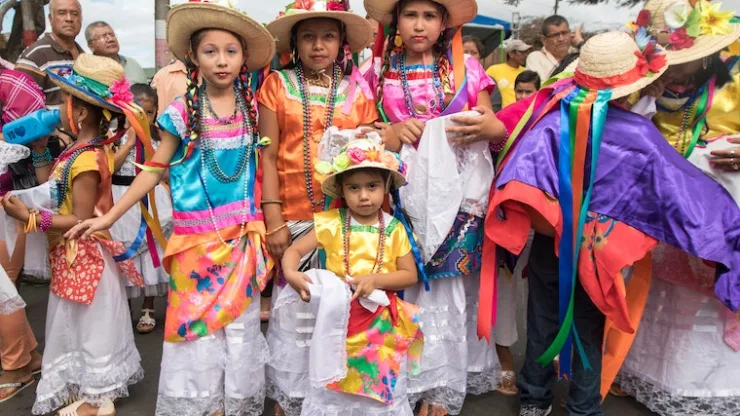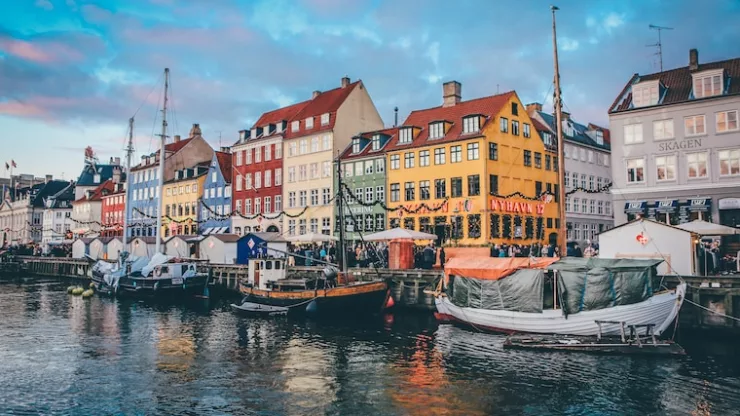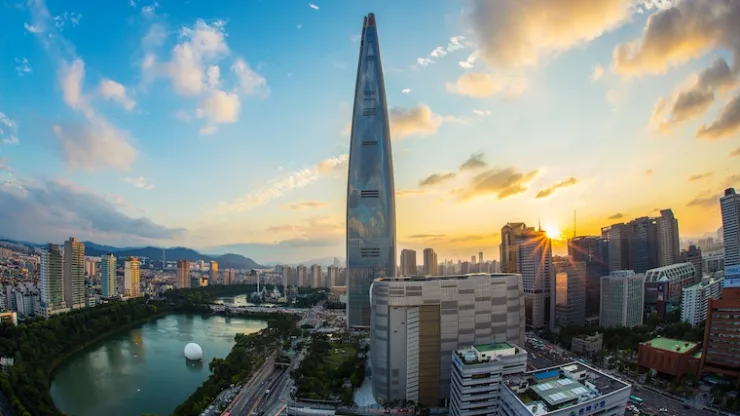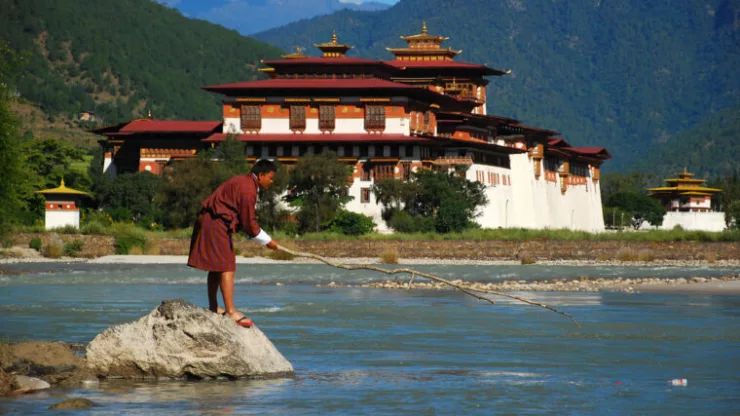Quick Facts
- Capital: Managua
- Population: 6.63 million
- Area: 130,373 km²
- Currency: Córdoba
- Official Language: Spanish
As the largest country in Central America, Nicaragua boasts a rich history, stunning landscapes, and a vibrant culture.
This article dives into 33 intriguing facts about Nicaragua that will pique your curiosity and leave you wanting more.
Let’s get started!
Facts About Nicaragua
- Nicaragua is home to two oceans. The country is bordered by the Pacific Ocean to the west and the Caribbean Sea to the east, making it one of the few places where you can swim in two different oceans on the same day.
- Lake Nicaragua is the largest freshwater lake in Central America. With an area of about 8,264 square kilometers, it’s the 19th-largest lake in the world by surface area.
- Nicaragua has 19 active volcanoes. These volcanoes are part of the Pacific Ring of Fire, a geological area with frequent volcanic eruptions and earthquakes.
- Ometepe Island is the world’s largest volcanic island in a freshwater lake. It’s formed by two volcanoes, Concepción and Maderas, and is located in Lake Nicaragua.
- Leon Viejo is a UNESCO World Heritage site. The ruins of this city, founded in 1524, are a testament to the first European settlements in the Americas.
- Nicaragua is known for its flor de caña rum. This high-quality rum has won numerous international awards and is a key part of the country’s cultural identity.
- Nicaragua’s official currency is the Córdoba, named after Spanish conquistador Francisco Hernández de Córdoba. He was the founder of the cities of Granada and León, two of the oldest European-founded cities in the Americas.
- The Bosawás Biosphere Reserve is one of the largest rainforest reserves in Central America. It covers over 20,000 square kilometers and is home to diverse flora and fauna, including several endangered species.
- Nicaragua’s national bird is the guardabarranco (turquoise-browed motmot). This colorful bird is known for its distinctive tail feathers, which resemble two pendulums.
- Baseball is the most popular sport in Nicaragua. Introduced by the United States in the early 20th century, baseball has become an essential part of Nicaraguan culture.
- Nicaragua has a unique dual celebration called Gritería. Celebrated on December 7th and 8th, it’s a religious event honoring the Immaculate Conception of the Virgin Mary, characterized by singing, fireworks, and processions.
- Nicaragua is known for its traditional dance, El Güegüense. This satirical drama, which combines music, dance, and theater, has been recognized by UNESCO as a Masterpiece of the Oral and Intangible Heritage of Humanity.
- The Mombacho Volcano Natural Reserve is home to unique ecosystems. The cloud forest that covers the volcano’s slopes is home to numerous species found nowhere else on Earth.
- Nicaragua has the largest number of pre-Columbian petroglyphs in Central America. These ancient rock carvings, found mainly on Ometepe Island, provide valuable insights into the region’s prehistoric cultures.
- Nicaraguan cuisine is a blend of indigenous, Spanish, and Creole influences. Popular dishes include gallo pinto (rice and beans), nacatamales (meat and vegetable-filled corn dough), and vigorón (cabbage salad with yucca and pork rinds).
- The Rubén Darío National Theatre in Managua is named after the famous Nicaraguan poet. Considered one of the most important Spanish-language poets, Rubén Darío played a significant role in the modernismo literary movement.
- The Corn Islands are two idyllic Caribbean islands off the coast of Nicaragua. Little Corn Island and Big Corn Island are known for their white-sand beaches, crystal-clear waters, and vibrant coral reefs.
- Nicaragua has the oldest university in Central America. The Universidad Nacional Autónoma de Nicaragua (UNAN) was founded in 1812, making it the region’s oldest institution of higher learning.
- Nicaragua’s name is derived from two words. “Nicarao” refers to the indigenous people who inhabited the area, and “agua” means water in Spanish, signifying the country’s abundant lakes and rivers.
- Nicaragua has one of the largest cathedral basilicas in Central America. The Cathedral Basilica of the Assumption of León, built in the 18th century, is a stunning example of Spanish Baroque architecture.
- Nicaragua is part of the Mesoamerican Biological Corridor, a network of protected areas stretching from Mexico to Panama. This initiative aims to conserve biodiversity and promote sustainable development across the region.
- Nicaragua’s Masaya Volcano is one of the most accessible active volcanoes in the world. Visitors can drive up to the crater’s edge and observe the lava lake within, making it a popular tourist attraction.
- Nicaragua is home to the Somoto Canyon, a geological marvel. This stunning canyon, discovered only in 2004, offers visitors the opportunity to hike, swim, and explore its pristine natural beauty.
- Nicaraguan handicrafts are renowned for their quality and diversity. The town of Masaya is particularly famous for its artisan market, where you can find handmade pottery, wood carvings, textiles, and more.
- Nicaragua’s Rio San Juan is an important ecological corridor. This 200-kilometer-long river, which connects Lake Nicaragua to the Caribbean Sea, supports diverse ecosystems and numerous species of migratory birds.
- Nicaragua is a significant producer of coffee. The country’s high-altitude regions, such as Matagalpa and Jinotega, are known for producing high-quality arabica coffee beans.
- Nicaragua is home to the Indio Maíz Biological Reserve, one of the most biodiverse areas in Central America. This pristine rainforest reserve is home to countless species of plants, animals, and insects, including jaguars, tapirs, and harpy eagles.
- Nicaragua has a unique national musical instrument called the marimba. This percussion instrument, made of wooden bars and resonators, is played with mallets and has a distinctive melodic sound.
- Nicaragua’s Cerro Negro is a popular destination for volcano boarding. This extreme sport involves sliding down the volcanic ash-covered slopes of Cerro Negro on a wooden board, reaching speeds of up to 50 kilometers per hour.
- Nicaragua has a vibrant street art scene. Cities like Estelí are adorned with colorful murals reflecting the country’s history, culture, and social issues.
- Nicaragua’s Apoyo Lagoon is a crater lake with crystal-clear waters. Formed more than 20,000 years ago by a volcanic eruption, the lagoon is a popular destination for swimming, kayaking, and birdwatching.
- Nicaragua has a rich tradition of oral storytelling. Known as Cuentos y Leyendas, these folktales and legends are passed down through generations, preserving the country’s cultural heritage.
- Nicaragua’s Chocoyero-El Brujo Nature Reserve is home to a unique species of parakeet. The Chocoyo, or Pacific parakeet, nests in the reserve’s cliffs and can be seen in large flocks, giving the reserve its name.
Conclusion
Nicaragua is a captivating and diverse country with a wealth of natural beauty, cultural heritage, and rich history.
From its stunning landscapes, such as volcanoes, lakes, and pristine beaches, to its vibrant cities filled with colonial architecture, street art, and lively markets, there is no shortage of fascinating experiences for visitors.
The country’s unique traditions, delicious cuisine, and warm hospitality make it a truly unforgettable destination.
As you explore Nicaragua, you’ll undoubtedly be charmed by the country’s many wonders and the resilience and creativity of its people.
Nicaragua FAQ
What is the official language of Nicaragua?
Spanish is the official language of Nicaragua. However, you can also find indigenous languages and Creole English spoken in some areas, particularly along the Caribbean coast.
What is the climate like in Nicaragua?
Nicaragua has a tropical climate with two distinct seasons: the dry season, which lasts from November to April, and the rainy season, from May to October.
The country’s Pacific side tends to be drier and warmer, while the Caribbean side experiences more rainfall and humidity.
Is Nicaragua safe for tourists?
Nicaragua is generally considered a safe destination for tourists. However, like any other country, it’s important to take common-sense precautions, such as avoiding poorly lit areas at night and not displaying valuable items in public.
Always check your country’s travel advisory before planning a trip.
What is the best time of year to visit Nicaragua?
The best time to visit Nicaragua is during the dry season, from November to April.
This period offers the most pleasant weather for outdoor activities and sightseeing.
However, it’s also the peak tourist season, so be prepared for larger crowds and higher prices.
Do I need a visa to visit Nicaragua?
Visa requirements vary depending on your nationality.
Citizens of the United States, Canada, the European Union, and many other countries can enter Nicaragua without a visa for stays of up to 90 days.
However, a tourist card must be purchased upon arrival.
It’s always a good idea to check with the Nicaraguan consulate or embassy in your country for the most up-to-date information.
What is Nicaragua’s currency?
The official currency of Nicaragua is the Córdoba. US dollars are also widely accepted, particularly in tourist areas.
It’s a good idea to carry some small denominations of local currency for smaller purchases and tips.
Are there any UNESCO World Heritage sites in Nicaragua?
Yes, Nicaragua has two UNESCO World Heritage sites: the Ruins of León Viejo and the Cathedral of León. Additionally, several sites, such as Ometepe Island and the Bosawás Biosphere Reserve, are on the Tentative List for future consideration.
What are the main traditional dishes in Nicaragua?
Some of the main traditional dishes in Nicaragua include:
- Gallo pinto: A staple dish made of rice and beans, often served with eggs, cheese, or meat.
- Nacatamales: Meat and vegetable-filled corn dough wrapped in banana leaves and steamed.
- Vigorón: A popular street food dish consisting of cabbage salad, yucca, and pork rinds.
- Sopa de Albóndigas: A hearty meatball soup made with beef, rice, and vegetables.
- Quesillo: A soft tortilla filled with cheese, onions, and sour cream, typically served with a spicy sauce.
What wildlife can be found in Nicaragua?
Nicaragua is home to a diverse array of wildlife, including:
- Jaguars, pumas, and ocelots
- Baird’s tapirs and white-lipped peccaries
- Howler, spider, and capuchin monkeys
- Sea turtles, such as hawksbill, green, leatherback, and olive ridley turtles
- Various bird species, including the national bird, the guardabarranco (turquoise-browed motmot), and the harpy eagle
- Reptiles, such as green iguanas and American crocodiles
- Numerous species of fish and coral in the country’s marine habitats
What are some traditional festivals in Nicaragua?
Some of the most popular traditional festivals in Nicaragua include:
- La Gritería: A religious celebration held in December in honor of the Immaculate Conception of the Virgin Mary.
- Palo de Mayo: A lively Afro-Caribbean dance festival celebrated in May on the Caribbean coast.
- Fiesta de San Sebastián: A week-long festival in January in the city of Diriamba, featuring traditional music, dance, and processions.
- Santo Domingo de Guzmán: A 10-day festival in August in Managua, celebrating the patron saint of the city with parades, music, and dancing.
These festivals showcase Nicaragua’s vibrant culture, blending indigenous, African, and European traditions.

I am a fun fact enthusiast and creator of Facts On Tap.
I love to share my knowledge and curiosity with readers and inspire them to learn something new every day.
When I’m not writing, I enjoy traveling, reading, and playing trivia games with my friends.




